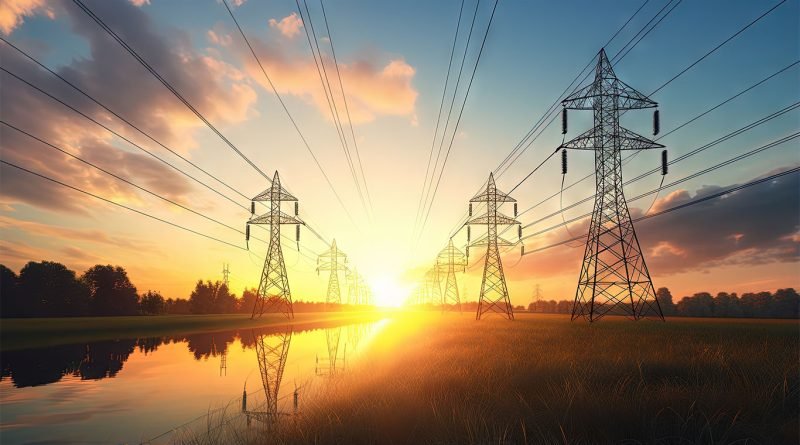Introduction:
Electricity, the invisible force that powers our modern world, has become an indispensable part of our daily lives. From illuminating our homes to fueling technological advancements, electricity plays a pivotal role in shaping the way we live and work. In this article, we will embark on a journey to understand the fundamentals, generation, distribution, and the transformative impact of electricity on society. Read more techniclauncher.org.
- The Fundamentals of Electricity:
At its core, electricity is the flow of electrons, the negatively charged particles within atoms. It is a form of energy resulting from the existence of charged particles (protons and electrons), and the movement of these particles generates an electric current. The unit of measurement for electric current is the ampere (A).
Electricity is categorized into two types: direct current (DC) and alternating current (AC). DC flows in one direction, commonly found in batteries, while AC alternates direction periodically, making it suitable for long-distance transmission. Nikola Tesla and Thomas Edison were central figures in the historical battle between DC and AC, with AC ultimately prevailing as the standard for power distribution.
- Electricity Generation:
Electricity is generated through various methods, each with its advantages and environmental considerations.
a. Fossil Fuels: Historically, the majority of electricity has been generated through the burning of fossil fuels like coal, oil, and natural gas. This process involves heating water to produce steam, which then drives turbines connected to generators.
b. Renewable Energy: With growing environmental concerns, there has been a significant shift toward renewable energy sources. Solar, wind, hydroelectric, and geothermal power harness the energy from natural sources to generate electricity. These methods are more sustainable and reduce the carbon footprint associated with electricity generation.
c. Nuclear Energy: Nuclear power plants use controlled nuclear reactions to generate heat, producing steam to drive turbines. While nuclear energy is a low-carbon option, concerns about safety and radioactive waste disposal persist.
d. Emerging Technologies: Advancements in technology have led to the exploration of new and innovative methods for electricity generation, such as tidal and wave energy, piezoelectric materials, and even the potential use of space-based solar power.
- Electricity Distribution:
Once generated, electricity undergoes a complex journey through a network of power lines, transformers, and substations before reaching our homes and businesses.
a. Power Grid: The power grid is a vast interconnected network that facilitates the transmission and distribution of electricity. It consists of high-voltage transmission lines, substations, and transformers.
b. Transformers: Transformers play a crucial role in the distribution process. They step up the voltage for efficient long-distance transmission and step it down for safe consumption at homes and businesses.
c. Distribution Lines: From the grid, electricity travels through distribution lines to local substations, which further distribute it to residential and commercial areas. These lines can be overhead or underground, depending on local infrastructure.
d. Smart Grids: The integration of advanced technologies has given rise to smart grids, which use digital communication to enhance the efficiency, reliability, and sustainability of electricity distribution. Smart grids allow for real-time monitoring, automated responses to changes in demand, and improved integration of renewable energy sources.
- Impacts on Society:
Electricity has had a profound impact on society, transforming the way we live, work, and communicate.
a. Industrial Revolution: The advent of electricity marked a significant milestone in the Industrial Revolution, powering factories and enabling mass production. Electric motors replaced steam engines, leading to increased efficiency and productivity.
b. Urbanization: The availability of electricity spurred urbanization as cities became electrified. Streetlights, public transportation, and the electrification of homes contributed to the growth of urban areas.
c. Technological Advancements: The digital age owes its existence to electricity. From the invention of the light bulb to the development of computers, smartphones, and the internet, electricity has been a driving force behind technological advancements.
d. Quality of Life Improvements: Electricity has significantly improved our quality of life by providing access to essential services such as healthcare, education, and entertainment. It has enabled the development of medical equipment, powered communication devices, and brought about innovations in various fields.
- Challenges and Future Considerations:
While electricity has brought about immense progress, it also poses challenges, including environmental concerns, energy security, and the need for sustainable practices.
a. Environmental Impact: The reliance on fossil fuels for electricity generation contributes to air pollution and climate change. The shift toward renewable energy sources is crucial to mitigate these environmental impacts.
b. Energy Storage: The intermittent nature of renewable energy sources like solar and wind necessitates advancements in energy storage technologies. Efficient energy storage solutions will help address the challenges associated with variable power generation.
c. Grid Resilience: The increasing complexity and interconnectivity of power grids raise concerns about resilience in the face of natural disasters, cyberattacks, or other disruptions. Ensuring the robustness of power infrastructure is crucial for maintaining a reliable electricity supply.
d. Electrification of Transportation: The electrification of transportation, including electric vehicles, presents both opportunities and challenges. While it offers a cleaner alternative to traditional combustion engines, it requires an expanded and more resilient power grid.
Conclusion:
Electricity, once a scientific curiosity, has become an integral part of our modern existence. From powering our homes and industries to driving technological advancements, electricity has shaped the trajectory of human progress. As we navigate the challenges of sustainability and resilience, the ongoing evolution of electricity generation and distribution will play a pivotal role in shaping the future of our interconnected world. Embracing innovative technologies, prioritizing sustainability, and fostering responsible consumption are key to ensuring that electricity continues to be a force for positive transformation in the decades to come. See more techhoa.com.
